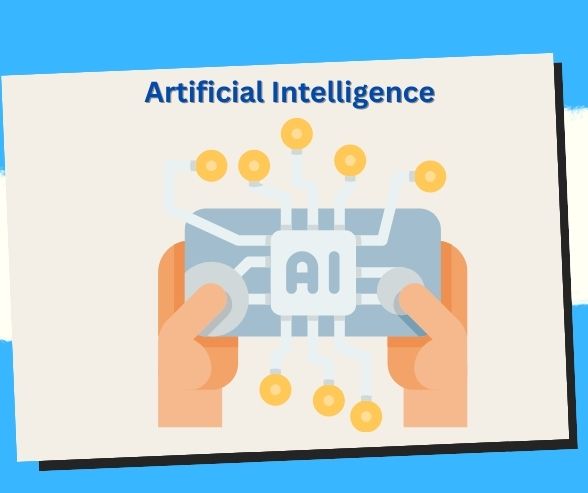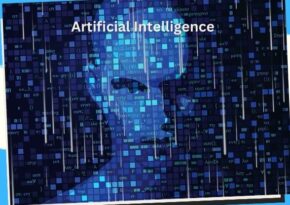
Revolutionizing Accessibility: Strategies for AI-Driven Solutions for Persons with Disabilities
Discover innovative approaches to develop AI-driven accessibility solutions tailored to the unique needs of persons with disabilities, fostering inclusion and empowerment.
Opening Doors to Inclusion: A Guide to Creating AI-Driven Accessibility Solutions for Persons with Disabilities
In a world increasingly shaped by technology, it’s essential to ensure that everyone, regardless of ability, can access and benefit from digital resources and services. Artificial intelligence (AI) presents a powerful tool for creating innovative accessibility solutions that empower persons with disabilities to navigate the digital landscape with greater independence and inclusivity. In this comprehensive guide, we’ll explore how developers, designers, and advocates can harness the potential of AI to create transformative accessibility solutions for persons with disabilities.
🌟 Understanding the Importance of AI-Driven Accessibility Solutions
Before diving into the specifics, let’s highlight why AI-driven accessibility solutions are essential for persons with disabilities:
- Empowerment: AI technologies have the potential to enhance independence, autonomy, and participation in daily activities for persons with disabilities, unlocking new opportunities for social inclusion and economic empowerment.
- Personalization: AI-driven solutions can be tailored to meet the unique needs and preferences of individuals with diverse disabilities, offering personalized assistance and support across various contexts and environments.
- Innovation: AI enables the development of cutting-edge accessibility solutions that go beyond traditional assistive technologies, leveraging advanced capabilities such as natural language processing, computer vision, and predictive analytics to address complex accessibility challenges.
- Inclusivity: By prioritizing accessibility in the design and development of AI-powered products and services, we can create a more inclusive digital ecosystem that benefits everyone, regardless of ability.
🛠️ Steps to Create AI-Driven Accessibility Solutions
Now, let’s outline a systematic approach to creating AI-driven accessibility solutions that empower persons with disabilities:
1. Identify User Needs and Challenges
Start by conducting user research to understand the specific needs, challenges, and preferences of persons with disabilities. Engage directly with individuals, disability advocacy organizations, and community groups to gather insights and feedback that inform the design and development process.
2. Choose Appropriate AI Technologies
Select AI technologies that are well-suited to addressing the identified accessibility challenges. Depending on the requirements, consider leveraging machine learning, natural language processing, computer vision, speech recognition, or other AI techniques to develop tailored solutions that meet user needs effectively.
3. Design Inclusive User Interfaces
Ensure that the user interfaces of AI-driven accessibility solutions are intuitive, user-friendly, and accessible to persons with disabilities. Follow best practices for inclusive design, such as providing alternative text for images, captions for videos, and keyboard navigation options for users with mobility impairments.
4. Develop Robust Training Data Sets
Collect and curate high-quality training data sets that accurately represent the diversity of users and scenarios encountered in real-world settings. Pay special attention to inclusivity and diversity considerations to avoid bias and ensure equitable representation of persons with disabilities in the data.
5. Implement Continuous Testing and Iteration
Iterate on the design and development of AI-driven accessibility solutions through continuous testing and feedback loops. Involve end-users in usability testing sessions to identify usability issues, accessibility barriers, and areas for improvement, and prioritize iterative enhancements based on user input.
6. Ensure Compatibility and Integration
Ensure that AI-driven accessibility solutions are compatible with existing assistive technologies, platforms, and devices commonly used by persons with disabilities. Facilitate seamless integration with mainstream products and services to maximize accessibility and interoperability across the digital ecosystem.
🔍 Key Considerations and Tips
- User-Centered Design: Prioritize the needs and experiences of persons with disabilities throughout the design and development process, fostering co-creation and collaboration.
- Privacy and Data Security: Safeguard the privacy and confidentiality of user data by implementing robust data protection measures and adhering to relevant privacy regulations and standards.
- Collaboration and Partnerships: Foster partnerships with disability advocacy organizations, accessibility experts, and assistive technology providers to leverage collective expertise and promote shared goals of inclusion and accessibility.
- Education and Awareness: Raise awareness about the potential of AI-driven accessibility solutions among developers, designers, policymakers, and the broader community to foster a culture of accessibility and inclusion.
Benefits of Creating AI-Driven Accessibility Solutions for Persons with Disabilities
- Enhanced Independence: AI-driven solutions empower persons with disabilities to navigate their environment, access information, and perform tasks independently, promoting autonomy and self-reliance.
- Improved Accessibility: AI technologies enable the development of personalized accessibility solutions tailored to individual needs, thereby enhancing access to digital, physical, and social environments for persons with disabilities.
- Inclusive Design: By incorporating AI-driven accessibility features from the outset, developers can ensure that products and services are inclusive and accessible to users of all abilities, fostering a more inclusive design ethos.
- Efficiency and Productivity: AI-driven accessibility solutions streamline tasks, automate processes, and reduce barriers, enabling persons with disabilities to participate more fully in educational, professional, and social activities with greater efficiency and productivity.
- Empowerment and Dignity: AI technologies empower persons with disabilities to exercise greater control over their lives, express themselves, and engage with the world on their own terms, thereby promoting dignity and agency.
- Personalization and Customization: AI-driven solutions offer personalized experiences that adapt to users’ unique needs, preferences, and abilities, providing tailored support and enhancing user satisfaction and engagement.
- Social Inclusion: AI-driven accessibility solutions facilitate social inclusion by enabling persons with disabilities to communicate, connect, and participate in social interactions, fostering meaningful relationships and community engagement.
- Barrier Removal: AI technologies help identify and remove barriers to accessibility in various contexts, including transportation, education, employment, and public spaces, thereby promoting equal opportunities and social equity.
- Innovative Solutions: AI-driven accessibility innovations inspire creativity and innovation in the development of assistive technologies, opening up new possibilities for addressing longstanding challenges and improving quality of life for persons with disabilities.
- Global Impact: By creating AI-driven accessibility solutions, developers contribute to a more inclusive and equitable society, promoting the rights and well-being of persons with disabilities on a global scale.
Case Studies: Successful AI-Driven Accessibility Solutions for Persons with Disabilities
- Seeing AI App (Microsoft): Microsoft’s Seeing AI app utilizes AI technologies such as object recognition, text-to-speech, and scene description to assist users with visual impairments in navigating their surroundings, reading text, and identifying objects and people.
- Project Euphonia (Google): Google’s Project Euphonia uses AI-powered speech recognition and synthesis to improve communication for individuals with speech impairments, enabling them to be better understood in everyday conversations and interactions.
- Brain-Computer Interface (BCI) Technology: BCI technology, such as BrainGate developed by BrainCo, enables individuals with severe physical disabilities to control assistive devices, computers, and prosthetic limbs using their brain signals, offering new avenues for independence and mobility.
- AI-Powered Captioning and Subtitling: AI-driven captioning and subtitling solutions, such as those offered by companies like Otter.ai and Rev.com, utilize speech recognition algorithms to automatically generate captions for videos, enhancing accessibility for individuals with hearing impairments.
- Smart Home Accessibility Solutions: Companies like Amazon and Google develop AI-driven smart home devices and assistants, such as Amazon Echo and Google Home, which can be voice-controlled and integrated with accessibility features to assist individuals with mobility and dexterity impairments in managing their home environment.
- Autism Spectrum Disorder (ASD) Support Apps: AI-powered apps, such as Proloquo2Go and MindMoo, are designed to support individuals with autism spectrum disorder (ASD) in communication, social skills development, and emotional regulation through features such as visual schedules, picture exchange, and emotion recognition.
- Accessible Transportation Solutions: AI-driven transportation platforms, like Waymo’s autonomous vehicles and Uber’s accessibility features, leverage AI technologies to improve accessibility and mobility options for individuals with disabilities, offering on-demand and inclusive transportation services.
- Assistive Robotics: Companies like Toyota and Honda develop AI-driven robotic devices, such as the Toyota Human Support Robot and Honda Walking Assist Device, to assist individuals with mobility impairments in performing daily tasks, navigating environments, and enhancing independence.
- AI-Powered Reading Assistance: AI-driven reading assistance tools, such as Voice Dream Reader and Learning Ally, use text-to-speech technology and dyslexia-friendly features to support individuals with reading difficulties, learning disabilities, and visual impairments in accessing and comprehending written content.
- Accessible Gaming Technologies: AI-driven gaming technologies, such as Xbox Adaptive Controller by Microsoft, incorporate customizable input options and accessibility features to make video gaming more inclusive and accessible for individuals with mobility and dexterity impairments.
Key Takeaways for Creating AI-Driven Accessibility Solutions for Persons with Disabilities
- User-Centered Design: Prioritize the needs, preferences, and experiences of persons with disabilities in the design and development of AI-driven accessibility solutions, ensuring that they are usable, effective, and empowering for users.
- Accessibility by Default: Integrate accessibility features and considerations into the development process from the outset, adopting a universal design approach that benefits all users and promotes inclusivity.
- Continuous Improvement: Iterate and refine accessibility solutions based on user feedback, usability testing, and evolving needs and technologies to ensure ongoing relevance, effectiveness, and user satisfaction.
- Collaborative Partnerships: Foster collaboration and partnerships with persons with disabilities, advocacy organizations, researchers, and other stakeholders to co-create and co-design AI-driven accessibility solutions that address real-world challenges and priorities.
- Ethical Considerations: Consider the ethical implications of AI-driven accessibility solutions, including privacy, data security, algorithmic bias, and consent, to ensure that they uphold the rights, dignity, and autonomy of users with disabilities.
- Education and Training: Provide education, training, and support to users, caregivers, educators, and professionals on the use and benefits of AI-driven accessibility solutions, promoting digital literacy and empowerment among persons with disabilities.
- Interdisciplinary Collaboration: Foster interdisciplinary collaboration between experts in AI, disability studies, human-computer interaction, assistive technology, and related fields to leverage diverse perspectives and expertise in creating holistic and impactful accessibility solutions.
- Regulatory Compliance: Ensure compliance with accessibility standards, regulations, and guidelines, such as the Web Content Accessibility Guidelines (WCAG) and the Americans with Disabilities Act (ADA), to promote legal and ethical compliance and enhance accessibility for persons with disabilities.
- Scalability and Sustainability: Design AI-driven accessibility solutions that are scalable, adaptable, and sustainable over time, considering factors such as interoperability, maintenance, and resource availability to maximize impact and reach.
- Empowerment and Agency: Empower persons with disabilities to be active participants and co-creators in the development, implementation, and evaluation of AI-driven accessibility solutions, fostering a sense of ownership, dignity, and agency in shaping their own experiences and environments.
FAQs: Addressing Common Concerns about AI-Driven Accessibility Solutions for Persons with Disabilities
1. How do AI-driven accessibility solutions benefit persons with disabilities?
- AI-driven accessibility solutions enhance independence, autonomy, and inclusion for persons with disabilities by providing personalized support, removing barriers, and enabling greater access to information, communication, and opportunities.
2. Are AI-driven accessibility solutions only relevant for individuals with specific disabilities?
- No, AI-driven accessibility solutions can benefit individuals with diverse disabilities, including mobility impairments, visual impairments, hearing impairments, cognitive impairments, and neurodevelopmental disorders, by addressing their unique needs and challenges.
3. How can developers ensure that AI-driven accessibility solutions are usable and effective for users with disabilities?
- Developers should prioritize user-centered design principles, conduct usability testing with persons with disabilities, incorporate feedback from diverse users, and adhere to accessibility standards and guidelines to ensure that AI-driven accessibility solutions meet the needs and preferences of users with disabilities.
4. Are AI-driven accessibility solutions accessible to individuals with varying levels of technical expertise?
- Yes, AI-driven accessibility solutions can be designed to be user-friendly, intuitive, and customizable to accommodate users with varying levels of technical expertise and accessibility preferences, promoting ease of use and adoption among diverse user groups.
5. How can AI-driven accessibility solutions address the diverse and evolving needs of persons with disabilities?
- AI-driven accessibility solutions can leverage machine learning algorithms, adaptive technologies, and personalized features to dynamically adjust to users’ changing needs, preferences, and abilities, providing flexible and responsive support that adapts to individual users over time.
6. What role can advocacy organizations play in promoting the development and adoption of AI-driven accessibility solutions?
- Advocacy organizations can raise awareness, promote best practices, advocate for policy changes, and collaborate with stakeholders to advance the development, implementation, and adoption of AI-driven accessibility solutions that meet the needs and priorities of persons with disabilities.
7. Are there privacy and security concerns associated with AI-driven accessibility solutions?
- Yes, developers should address privacy and security concerns by implementing robust data protection measures, obtaining user consent, minimizing data collection and retention, and adhering to relevant privacy regulations and guidelines to safeguard the privacy and confidentiality of users with disabilities.
8. How can AI-driven accessibility solutions address challenges related to algorithmic bias and discrimination?
- Developers should mitigate algorithmic bias and discrimination by ensuring diverse and representative training data, implementing fairness-aware algorithms, conducting bias testing and mitigation, and promoting transparency and accountability in the design, deployment, and evaluation of AI-driven accessibility solutions.
9. What resources are available to support the development and adoption of AI-driven accessibility solutions?
- There are various resources available, including research publications, toolkits, guidelines, and funding opportunities provided by government agencies, non-profit organizations, industry consortia, and research institutes, which offer guidance, support, and collaboration opportunities for developers and stakeholders involved in creating AI-driven accessibility solutions.
10. How can individuals and organizations contribute to the advancement of AI-driven accessibility solutions for persons with disabilities?
- Individuals and organizations can contribute by advocating for inclusive design principles, supporting research and development initiatives, providing feedback on existing solutions, promoting accessibility standards and guidelines, and collaborating with stakeholders to create an inclusive and accessible digital environment for persons with disabilities.
By creating AI-driven accessibility solutions for persons with disabilities, developers and stakeholders can advance the principles of inclusivity, equity, and empowerment, paving the way for a more accessible and inclusive society where all individuals can participate, contribute, and thrive. These solutions not only enhance accessibility and independence for persons with disabilities but also promote innovation, social inclusion, and human rights for all.
Conclusion
By following these guidelines and embracing the power of AI-driven technologies, developers and advocates can create innovative accessibility solutions that empower persons with disabilities to fully participate in the digital world and lead fulfilling lives with dignity and independence. Together, let’s build a more inclusive and accessible future for all.
Key Phrases
- AI-Driven Accessibility Solutions
- Persons with Disabilities
- Inclusive Innovation
- Disability Accessibility
- Equal Access
- Empowerment Technology
- User-Centric Design
- Inclusive Society
- Independence Promotion
- Ethical Considerations
Hashtags
- #AccessibilitySolutions
- #DisabilityInclusion
- #AIforGood
- #InclusiveTechnology
- #EmpowermentTech
- #DisabilityRights
- #UserExperience
- #EthicalAI
- #EqualAccess
- #InnovationForAll
Save/Share this story with QR CODE
Disclaimer
This article is for informational purposes only and does not constitute endorsement of any specific technologies or methodologies and financial advice or endorsement of any specific products or services.
📩 Need to get in touch?
Feel free to Email Us for comments, suggestions, reviews, or anything else.
We appreciate your reading. 😊Simple Ways To Say Thanks & Support Us:
1.) ❤️GIVE A TIP. Send a small donation thru Paypal😊❤️
Your DONATION will be used to fund and maintain NEXTGENDAY.com
Subscribers in the Philippines can make donations to mobile number 0917 906 3081, thru GCash.
3.) 🛒 BUY or SIGN UP to our AFFILIATE PARTNERS.
4.) 👍 Give this news article a THUMBS UP, and Leave a Comment (at Least Five Words).
AFFILIATE PARTNERS

World Class Nutritional Supplements - Buy Highest Quality Products, Purest Most Healthy Ingredients, Direct to your Door! Up to 90% OFF.
Join LiveGood Today - A company created to satisfy the world's most demanding leaders and entrepreneurs, with the best compensation plan today.



 Business Technology, Finance Technology & Information Technology
Business Technology, Finance Technology & Information Technology





